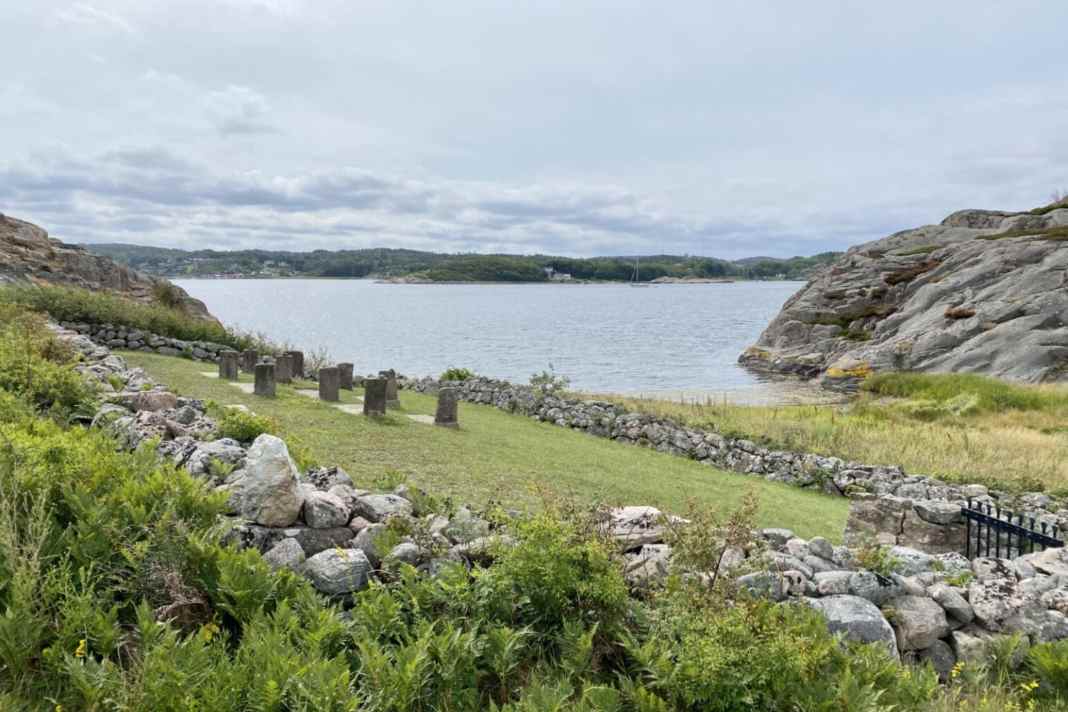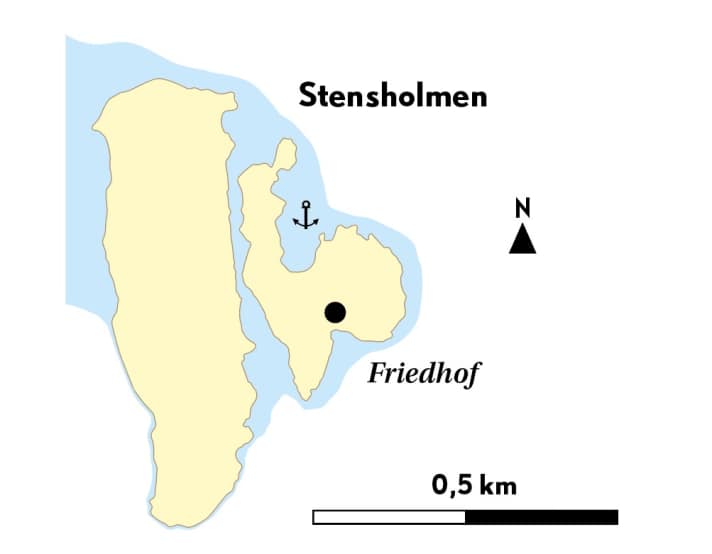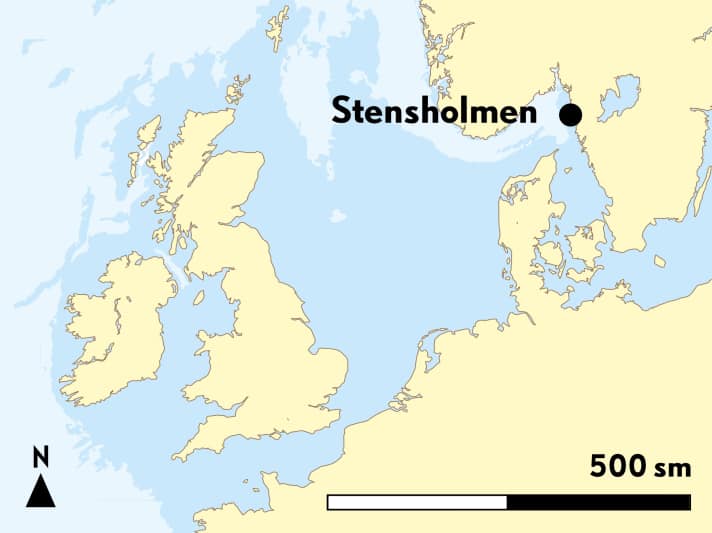





Stensholmen, one of countless skerries on the Swedish west coast, is only a few hundred metres in diameter, but there is a path that winds up from the beach, which otherwise belongs to the geese, and the shallow anchorage bay in the north-east through rocks and heather until the land falls away again on the other side.
The shadows of the First World War
And there lies the small German military cemetery, bordered by a neat rectangle of quarry stone. There are a good dozen gravestones here. Most of the dead fell in the Battle of the Skagerrak in May 1916, the largest naval battle of the First World War. Gorch Fock too.
Many people only know this pseudonym of the North German writer - and even then they tend to associate it with a well-known tall ship: the barque "Gorch Fock", training ship of the German Navy. His real name was Johann Kinau and he became famous for his seafaring stories.

Final resting place on Stensholmen
Born in Finkenwerder in 1880, he died on 31 May 1916 when his ship, the small cruiser "S.M.S. Wiesbaden", was caught between the lines of battle and sank in a hail of steel from the British. Only one man out of almost six hundred survived. The dead poet from the Elbe drifted more than 150 nautical miles through the North Sea to the Väderöarna, the "weather islands"which lie off the Skagerrak archipelago.
He was laid to rest on Stensholmen. A plaque, erected by the crew of the Lübeck steamer "Dora" on 1 July 1920, sends a "greeting home" to the fallen. A lonely, beautiful place. With an eternal view of the sea.
Anchor bay and beach for landing
Stensholmen is located at position: 58º34'33" North, 011º16'28" East in the archipelago belt of the Swedish west coast, south of the town of Fjällbacka in the Bohuslän region. The Skagerrak, which belongs to the North Sea, stretches off the coast. The island covers an area of just 0.16 square kilometres. There is no harbour, but there is a bay in the north-east that is suitable for anchoring and landing with a dinghy.

